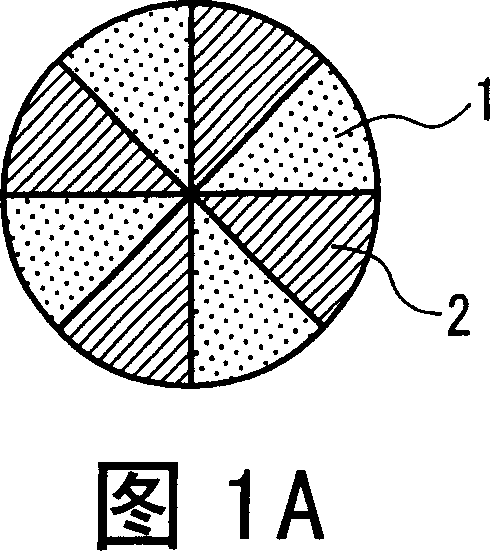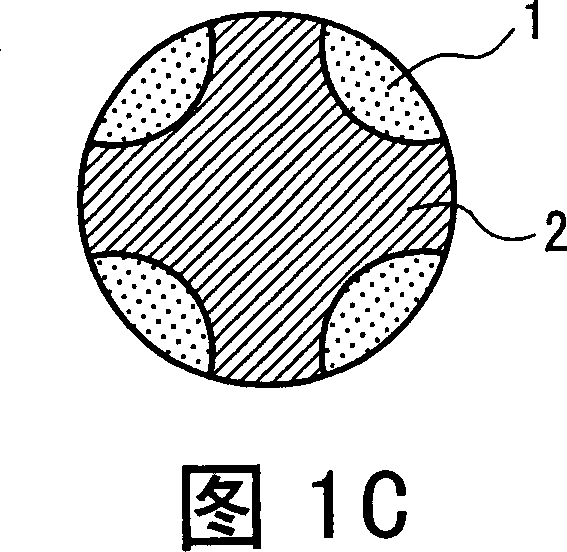Separator material and method of producing the same, and alkali secondary battery separator
A separator material, polyolefin technology, applied in the direction of alkaline batteries, battery pack parts, circuits, etc., can solve the problem that non-woven fabrics cannot be uniformly sulfonated
- Summary
- Abstract
- Description
- Claims
- Application Information
AI Technical Summary
Problems solved by technology
Method used
Image
Examples
preparation example Construction
[0063] (2) Preparation of samples
[0064] A 1 g sample was collected from the nonwoven fabric, and the sample was immersed in a 13% potassium hydroxide aqueous solution for 30 minutes. Thereafter, the solution was washed with tap water, followed by purified water for 30 minutes. Thereafter, the sample was dried at 60° C. for 1 hour. The sample was thus prepared.
[0065] (3) Oxygen combustion flask method
[0066] 5 ml of this absorption solution was put into a combustion flask, and its inner wall was wetted with purified water. Next, this sample (20 mg) was weighed into an ashless filter (5C), which was then placed in a platinum basket. The flask was filled with oxygen for 30 seconds. After this, an electric current was passed through the platinum basket to burn the sample. After the combustion, the flask was shaken while occasionally adding purified water to the liquid perfusion portion of the flask, followed by cooling for 5 minutes. After cooling, the inner wall of t...
Embodiment 1
[0119] Fiber 1 (40% by mass), Fiber 5 (40% by mass) and Fiber 7 (20% by mass) were mixed to prepare a water dispersion slurry having a concentration of 0.5% by mass. Fiber 1 was split using a beater, wherein the stirring time was 60 minutes and the stirring speed was 1000 rpm. With the formed water-dispersed slurry, each of the cylinder type wet paper machine and the short line type wet paper machine is used to produce a mass per unit area of 35 g / m 2 wet mesh. Combine these wet nets together. Next, the formed web was heat-treated using a cylinder dryer at a temperature of 135° C. and a linear pressure of 40 N / cm. As a result, the fiber 1, fiber 5 and fiber 7 are flattened mainly in the surface layer portion of the nonwoven fabric, while the sheath component of the fiber 5 is melted to bond the component fibers together to obtain a wet web. In the formed wet web, about 60% of the fibers 1 were split to form ultrafine staple fibers.
[0120]Thereafter, columnar spraying a...
Embodiment 2
[0124] A separator material of the present invention was obtained in a manner similar to Example 1, except: using SO 3 Gas handler, at a concentration of 8vol% SO 3 In a gas atmosphere, at a reaction temperature of 60° C. and a reaction time of 90 seconds, the wet-laid nonwoven fabric obtained by performing the spunlace treatment in Example 1 on the wet-laid web was subjected to sulfonation treatment; The sodium oxide solution was neutralized and the nonwoven fabric was washed with hot water at 60° C., and then dried at 70° C. using a magnetic drum dryer; the obtained nonwoven fabric was rolled up using a winder; thus, A sulfonated nonwoven was obtained. In the formed separator material, the ratio of flattened fibers bonded by polyolefin thermally bonded short fibers and constituting the surface layer portion of the nonwoven fabric was larger than that in the interior of the nonwoven fabric.
PUM
| Property | Measurement | Unit |
|---|---|---|
| specific surface area | aaaaa | aaaaa |
| melting point | aaaaa | aaaaa |
| specific surface area | aaaaa | aaaaa |
Abstract
Description
Claims
Application Information
 Login to View More
Login to View More - R&D
- Intellectual Property
- Life Sciences
- Materials
- Tech Scout
- Unparalleled Data Quality
- Higher Quality Content
- 60% Fewer Hallucinations
Browse by: Latest US Patents, China's latest patents, Technical Efficacy Thesaurus, Application Domain, Technology Topic, Popular Technical Reports.
© 2025 PatSnap. All rights reserved.Legal|Privacy policy|Modern Slavery Act Transparency Statement|Sitemap|About US| Contact US: help@patsnap.com



